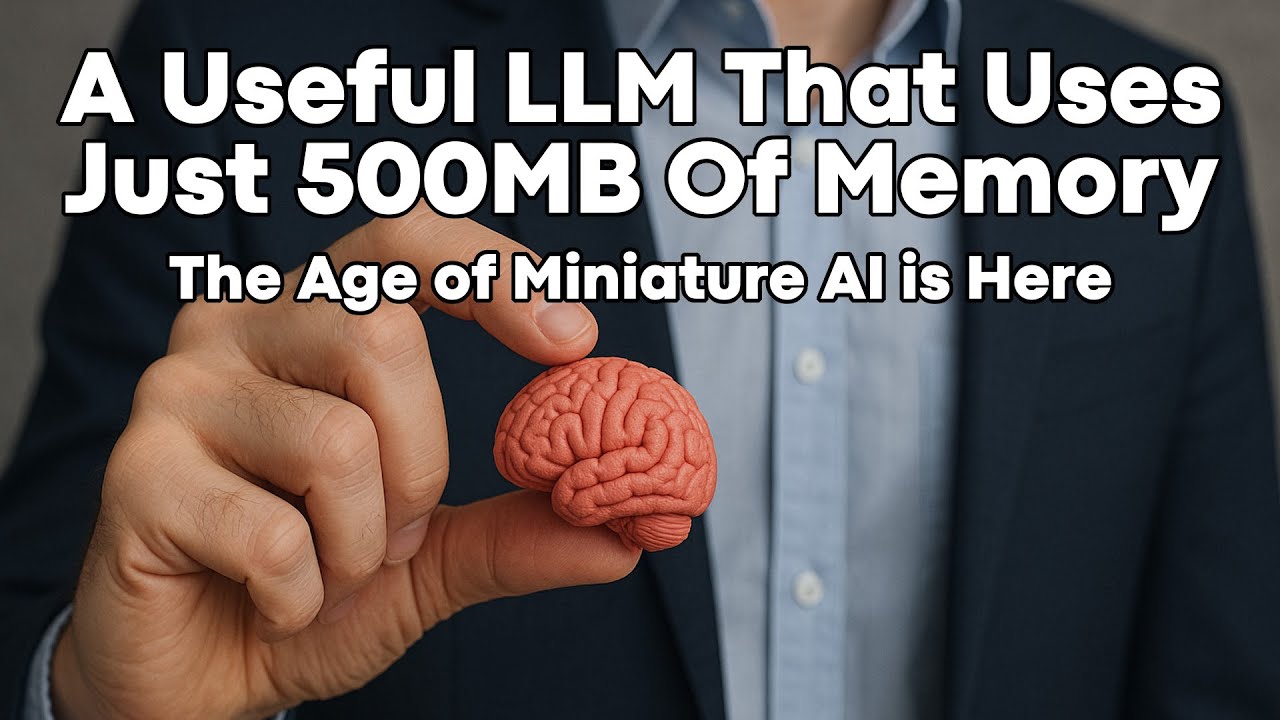The video showcases small language models like Quen 3, which can run on just 500MB of RAM and perform practical tasks such as grammar correction, sentiment analysis, and simple coding on everyday devices. While these models are surprisingly capable for basic language processing, they have limitations with complex tasks, making larger models or online access necessary for more advanced applications.
The video explores the capabilities of small language models, specifically focusing on a new family called Quen 3, which can run on just 500MB of RAM. Unlike large online models like ChatGPT or Gemini, which have billions of parameters and require powerful hardware, these tiny models are designed to operate on everyday devices such as PCs, smartphones, and tablets. The presenter emphasizes the significance of these small models, questioning whether they are merely academic exercises or genuinely useful tools for practical applications.
The presenter compares these small models to their larger counterparts, noting that while big models contain hundreds of billions of parameters and require extensive hardware, the smaller models are significantly more accessible. For example, the Quen 3 model with 0.6 billion parameters can run on modest GPUs or even CPUs, producing reasonable output speeds. Despite their limited size, these models can perform various tasks, including spelling correction, sentiment analysis, simple coding, and text rewriting, making them surprisingly capable for everyday language processing needs.
The video demonstrates the small models’ ability to handle tasks like fixing spelling and grammar, analyzing sentiment in customer reviews, generating simple code snippets, and rewriting complex paragraphs into simpler language. These tasks showcase the models’ usefulness in practical scenarios, especially for users who need quick, local processing without relying on cloud-based services. However, the presenter also highlights their limitations, such as struggling with complex logic puzzles, detailed historical facts, or extensive translation tasks, which require larger models or online access to more powerful AI systems.
The presenter emphasizes that for more advanced tasks—like creating detailed essay outlines, handling complex logic, or accessing comprehensive factual knowledge—models with more than four billion parameters are necessary. These larger models can better understand nuanced questions and provide more accurate, detailed responses. The presenter suggests that for high-quality results in areas like history, detailed research, or complex coding, online models or bigger local models are preferable, as small models lack the capacity to store and process vast amounts of information.
In conclusion, the video highlights the exciting potential of small, local language models that can run efficiently on everyday devices. These models are well-suited for common language tasks such as grammar correction, sentiment analysis, simple coding, and text rewriting, making them highly practical for personal and small-scale professional use. The presenter advocates for the development of more accessible, local AI tools that can perform useful language processing tasks without requiring extensive hardware, hinting at a future where such models become a standard feature on personal devices.
